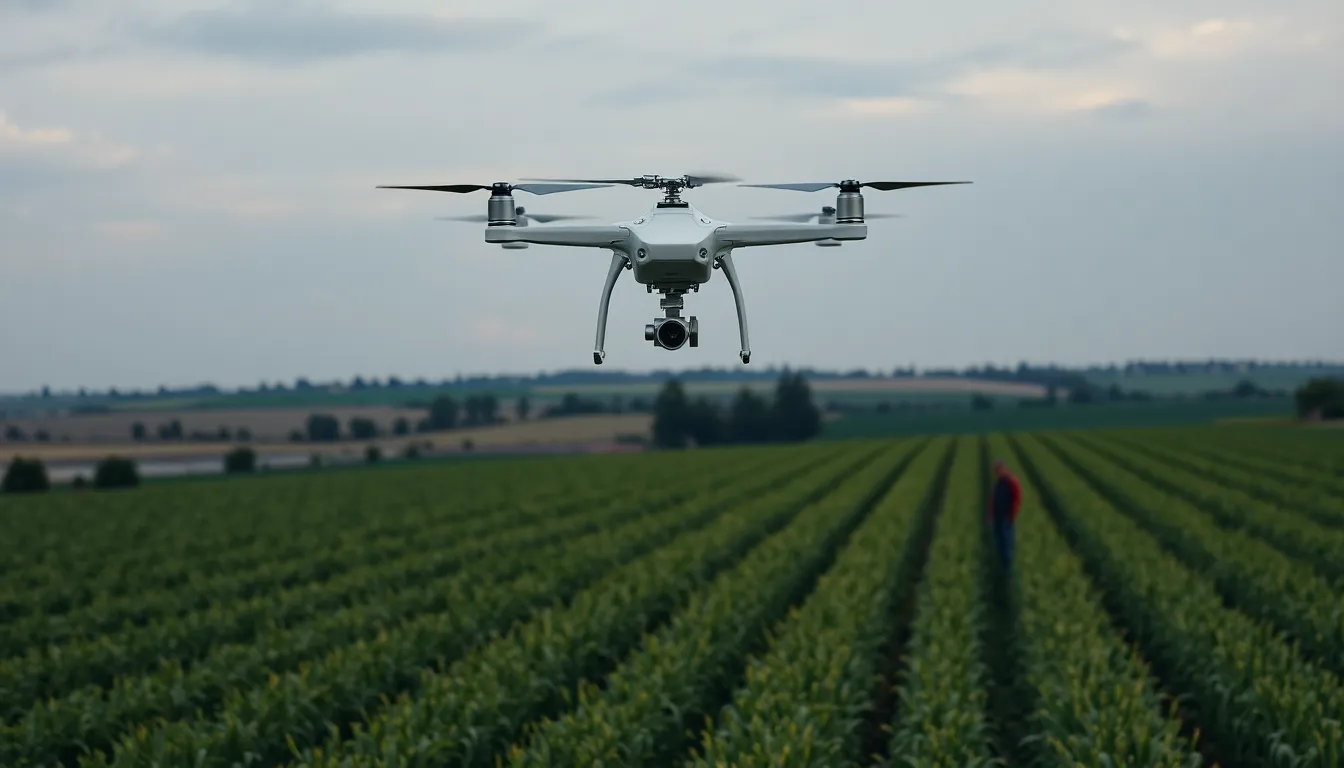In a world where technology seems to outpace imagination, helicopter drones are taking flight and changing the game. These flying marvels combine the thrill of aviation with the convenience of modern tech, making them the perfect gadget for anyone who’s ever dreamed of being a pilot without the hefty price tag or the need for a flight school.
Table of Contents
ToggleOverview of Helicopter Drones
Helicopter drones combine advanced technology with unique flying capabilities. These innovative devices offer a modern approach to personal and commercial aerial applications.
Definition and Types
Helicopter drones, or rotary-wing drones, utilize rotating blades for lift and propulsion. Types include single-rotor models that mimic full-size helicopters and coaxial designs featuring two sets of blades stacked vertically. Each type serves specific purposes, such as aerial photography, surveillance, and recreational use. The versatility in helicopter drone designs caters to diverse user needs across various sectors.
Advantages Over Traditional Drones
Helicopter drones provide superior stability and control compared to traditional multirotor models. They excel in hovering capabilities, allowing for precise maneuvers in tight spaces. Battery life often outlasts that of quadcopters, enabling extended flight times for longer missions. Additionally, their design allows for heavier payload capacity, making them suitable for carrying camera equipment or other accessories. Users appreciate these advantages in applications ranging from professional photography to emergency response scenarios.
Applications of Helicopter Drones

Helicopter drones offer diverse applications across multiple fields, leveraging their unique capabilities for various tasks.
Commercial Uses
In commercial sectors, helicopter drones revolutionize operations. Companies utilize these drones for aerial photography, real estate marketing, and surveying land. Additionally, industries benefit from inventory management inspections in warehouses or large facilities. Drone services provide remarkable efficiency, reducing the time needed for these tasks. Events and production firms employ these drones to capture immersive aerial footage. Moreover, agriculture professionals monitor crop health through aerial imaging, optimizing yields and management practices.
Military and Defense
Military organizations adopt helicopter drones for surveillance and reconnaissance missions. These drones excel in gathering intelligence while minimizing risk to personnel. They serve critical functions in battlefield operations, offering real-time data and situational awareness. Defense applications extend to logistics support, where drone deliveries enhance operational capabilities. Moreover, troops utilize helicopter drones for target acquisition and mapping for strategic planning. By leveraging advanced technology, military units maintain a tactical advantage, ensuring mission success.
Search and Rescue Operations
Search and rescue teams deploy helicopter drones in emergency situations. These drones cover vast areas quickly, locating missing persons or assessing disaster-stricken regions. Equipped with thermal imaging, they identify people in challenging conditions such as dense forests or rubble. Collaboration between drones and ground teams enhances response times and efficiency. Additionally, helicopter drones transport essential supplies to isolated areas during natural disasters. This technology significantly improves the chances of successful rescues, saving lives and supporting recovery efforts.
Technology Behind Helicopter Drones
Helicopter drones utilize advanced technology for enhanced performance and versatility. Their design features specific components that contribute to their functionality.
Key Components
Rotor systems are vital for creating lift. Single-rotor helicopters have a main rotor plus a tail rotor for stability. Coaxial configurations feature two rotors stacked one above the other, providing increased stability and reduced torque. Propulsion systems include electric motors that drive the rotors, allowing for precise control. Battery packs supply power, with advancements in lithium polymer batteries leading to longer flight times. Navigation systems employ GPS and inertial measurement units for accurate positioning and flight paths. Cameras and sensors are common payloads, enhancing aerial imagery and data collection.
Flight Mechanics
Lift generation occurs when rotor blades push air downwards, creating an upward force. Helicopter drones hover by maintaining a balance between lift and weight. Yaw, pitch, and roll facilitate maneuverability, allowing pilots to control movement in various directions. Throttle controls adjust rotor speeds, enabling ascent and descent. With a lower center of gravity, these drones offer improved stability during flight. Wind resistance is managed through rotor design, minimizing turbulence effects. Overall, flight mechanics contribute to the drones’ ability to perform complex tasks efficiently.
Leading Brands and Models
Several leading brands dominate the helicopter drone market. They consistently introduce innovative models, ensuring they meet diverse consumer needs.
Popular Models in the Market
The DJI Matrice 600 excels in aerial photography and cinematography. It’s designed for professional use, featuring extensive payload capacity and advanced stabilization technology. The Blade 120S offers an excellent option for beginners, showcasing user-friendly controls and affordability. The Yuneec H520 specializes in commercial applications, particularly in surveying and inspections, providing high-quality imaging capabilities. The Walkera Voyager 4 impresses with its real-time video transmission and autonomous flight options, making it suitable for industrial inspections and emergency response. Each model caters to specific applications, giving users the flexibility to choose according to their requirements.
Comparison of Features
When comparing helicopter drones, several key features stand out. Battery life varies significantly; the DJI Matrice 600 boasts a flight time of approximately 32 minutes, while the Blade 120S provides about 10 minutes. Payload capacity is another crucial factor; the Matrice 600 can carry up to 6 kilograms, ideal for heavy equipment. Stability features also differ; coaxial designs offer enhanced performance in windy conditions compared to traditional single-rotor configurations. Navigation systems play a vital role; many models incorporate GPS for precise positioning, further enhancing their usability in complex environments.
Helicopter drones represent a significant advancement in aerial technology. Their unique design and capabilities make them versatile tools for various industries. From enhancing commercial operations to improving emergency response efforts, these drones are changing the way tasks are accomplished in the air.
As technology continues to evolve, the potential applications for helicopter drones will likely expand further. With leading brands constantly innovating, users can expect more efficient and powerful models to emerge. The future of helicopter drones looks promising, offering exciting opportunities for both professionals and enthusiasts alike.


